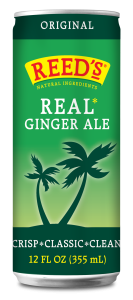In recent years, the direct-to-consumer (D2C) model has surged in popularity within the consumer packaged goods (CPG) industry, driven by changing consumer preferences, the rise of e-commerce, and the success of digitally native brands. By eliminating intermediaries like traditional retailers, CPG brands can build direct relationships with customers, offer personalized experiences, and drive brand loyalty. In this blog, we’ll explore the drivers behind the increasing demand for D2C in the CPG sector, the benefits of this model, and how brands are adapting to meet this demand.
Why D2C is Gaining Traction in the CPG Industry
- Changing Consumer Preferences
Today’s consumers value convenience, personalization, and transparency. Many now prefer to shop directly from brands they trust, especially when it comes to essentials like food, personal care, and health products. D2C meets these expectations by enabling brands to engage with customers directly, offer curated product recommendations, and provide a more seamless, customized shopping experience. - E-commerce Growth
E-commerce has boomed in the last decade, with online shopping now a primary channel for many consumers. With improved shipping infrastructure and widespread internet access, consumers are more comfortable purchasing CPG products online than ever before. The D2C model allows brands to capture a slice of this e-commerce growth, bypassing traditional retail and offering products directly through brand-owned websites or apps. - The Success of Digitally Native Brands
Brands like Dollar Shave Club, Warby Parker, and Glossier pioneered the D2C approach, showcasing the benefits of this model for CPG companies. Their success has inspired both legacy brands and startups to consider D2C strategies to compete and maintain relevancy. These digitally native brands demonstrated that D2C offers higher control over the brand experience, improved data insights, and stronger customer relationships. - Increasing Demand for Subscription Services
Subscription services have become a popular way for consumers to receive regular shipments of their favorite products, especially essentials like groceries, hygiene products, and pet supplies. D2C brands can leverage this demand by offering subscription-based options, ensuring a steady revenue stream and fostering brand loyalty.
The Benefits of D2C for CPG Brands
- Direct Access to Consumer Data
One of the most significant advantages of D2C is the ability to gather valuable consumer data. By engaging with customers directly, CPG brands can capture data on purchasing behavior, preferences, and feedback, enabling them to make data-driven decisions. This insight helps brands personalize the shopping experience, improve products, and launch more targeted marketing campaigns. - Higher Profit Margins
In the D2C model, CPG brands cut out intermediaries, allowing them to retain a larger portion of the revenue. Without the additional costs associated with third-party retailers, brands can increase profit margins or reinvest savings into product innovation, customer service, and marketing. - Improved Brand Loyalty
D2C enables CPG brands to build closer relationships with their customers, encouraging brand loyalty. Direct communication channels, such as email, SMS, and social media, allow brands to engage customers more personally, while D2C websites offer curated product recommendations and rewards programs. These interactions help establish an emotional connection, fostering long-term loyalty. - Enhanced Control Over the Brand Experience
Through D2C, CPG brands have complete control over the customer journey—from the first website visit to post-purchase engagement. This includes everything from product packaging and shipping speed to the messaging customers receive in emails and on social media. By owning this journey, brands can ensure that every interaction aligns with their values and standards. - Agility and Faster Product Development
In traditional retail, launching a new product can be time-consuming, with long lead times for approval, shelf space, and distribution. D2C, on the other hand, allows brands to launch products directly on their websites, gather customer feedback in real time, and adjust strategies accordingly. This agility helps brands respond quickly to trends and customer demands.
How CPG Brands Are Adapting to Meet D2C Demand
- Building User-Friendly E-commerce Platforms
A seamless e-commerce platform is essential for a successful D2C strategy. Many CPG brands have invested heavily in building or revamping their websites to provide a smooth, engaging online shopping experience. This includes offering easy navigation, personalized product recommendations, secure payment options, and convenient customer support. - Investing in Digital Marketing
D2C brands rely on digital channels to reach and engage their audience. Brands are increasingly leveraging social media, search engine marketing, email marketing, and influencer partnerships to build awareness, drive traffic, and convert leads. Storytelling through content marketing—such as behind-the-scenes videos, product demos, and user-generated content—also plays a crucial role in attracting and retaining D2C customers. - Implementing Subscription and Membership Models
Subscription models are particularly effective in D2C for CPG, offering customers convenience and reliability while ensuring recurring revenue for the brand. Some companies are even experimenting with memberships that provide exclusive benefits, such as early access to new products, discounts, or members-only events, to deepen customer relationships. - Expanding Fulfillment and Logistics Capabilities
Meeting D2C demand requires efficient fulfillment and logistics operations. Brands are investing in optimized warehouses, advanced inventory management systems, and even last-mile delivery solutions to ensure fast and reliable shipping. Some companies are also exploring partnerships with third-party logistics (3PL) providers to expand their reach and streamline operations. - Enhancing Customer Support
Customer service is a cornerstone of the D2C model, where consumers expect timely support. Brands are enhancing customer support by offering multiple communication channels (such as live chat, email, and phone), investing in chatbots for quick assistance, and training support teams to provide knowledgeable and empathetic service. A positive support experience can significantly impact customer loyalty and satisfaction.
The Future of D2C in CPG
As consumer expectations evolve and digital commerce continues to grow, D2C is poised to become a permanent fixture in the CPG landscape. The future of D2C may see even greater integration of technologies like artificial intelligence, virtual try-ons for personalized recommendations, and augmented reality for product visualization. Additionally, as sustainability concerns grow, we may see brands adopting more eco-friendly D2C practices, such as minimal packaging and carbon-neutral shipping options.
Ultimately, D2C demand in the CPG industry represents a shift toward customer-centric business models, where brands can connect directly with their customers, respond to their needs in real-time, and provide a shopping experience that is both convenient and personalized. By investing in the D2C model, CPG brands can stay competitive, build lasting customer relationships, and position themselves for future success.
Reed’s embraced the CPG D2C trend in 2020 with the launch of our shopify store, which you can visit now at store.drinkreeds.com.













